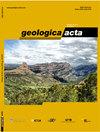Temporal variability of secondary processes in alkaline geothermal waters associated to granitic rocks: the Caldes de Boí geothermal system (Spain)
IF 2
4区 地球科学
Q2 GEOLOGY
引用次数: 1
Abstract
The Caldes de Boi geothermal waters show important differences in pH (6.5–9.6) and temperature (15.9oC–52oC) despite they have a common origin and a very simple circuit at depth (4km below the recharge area level). Thes differences are the result of secondary processes such as conductive cooling, mixing with colder shallower waters, and input of external CO2, which affect each spring to a different extent in the terminal part of the thermal circuit.In this paper, the secondary processes that control the geochemical evolution of this system have been addressed using a geochemical dataset spanning over 20 years and combining different approaches: classical geochemical calculations and geochemical modelling. Mixing between a cold and a thermal end-member, cooling and CO2 exchange are the processes affecting the spring waters with different intensity over time. These differences in the intensity of the secondary processes could be controlled by the effect of climate and indirectly by the geomorphological and hydrogeological setting of the different springs. Infiltration recharging the shallow aquifer is dominant during the rainy seasons and the extent of the mixing process is greater, at least in some springs.Moreover, significant rainfall can produce a decrease in the ground temperature favouring the conductive cooling. Finally, the geomorphological settings of the springs determine the thickness and the hydraulic properties of the saturated layer below them and, therefore, they affect the extent of the mixing process between the deep thermal waters and the shallower cold waters. The understanding of the compositional changes in the thermal waters and the main factors that could affect them is a key issue to plan the future management of the geothermal resources of the Caldes de Boi system. Here, we propose to use a simple methodology to assess the effect of those factors, which could affect the quality of the thermal waters for balneotherapy at long-term scale. Furthermore, the methodology used in this study can be applied to other geothermal systems.与花岗岩相关的碱性地热水中二次过程的时间变化性:Boí火山口地热系统(西班牙)
Caldes de Boi地热水在pH值(6.5–9.6)和温度(15.9°C–52°C)方面表现出重要差异,尽管它们有共同的来源和在深度(补给区水平以下4公里)的非常简单的回路。这些差异是二次过程的结果,如传导冷却、与较冷的浅水混合以及外部CO2的输入,这些过程对热回路末端部分的每个弹簧都有不同程度的影响。在本文中,使用跨越20多年的地球化学数据集,结合不同的方法:经典地球化学计算和地球化学建模,解决了控制该系统地球化学演化的二次过程。冷端构件和热端构件之间的混合、冷却和CO2交换是随着时间的推移以不同强度影响泉水的过程。二次过程强度的这些差异可以由气候的影响以及不同泉水的地貌和水文地质环境间接控制。在雨季,浅层含水层的渗透补给占主导地位,混合过程的程度更大,至少在一些泉水中是这样。此外,大量降雨会导致地面温度下降,有利于传导冷却。最后,泉水的地貌环境决定了其下方饱和层的厚度和水力特性,因此,它们影响了深层热水和浅层冷水之间混合过程的程度。了解热水的成分变化以及可能影响它们的主要因素是规划Caldes de Boi系统地热资源未来管理的关键问题。在这里,我们建议使用一种简单的方法来评估这些因素的影响,这些因素可能会影响长期温和治疗的热水质量。此外,本研究中使用的方法可以应用于其他地热系统。
本文章由计算机程序翻译,如有差异,请以英文原文为准。
求助全文
约1分钟内获得全文
求助全文
来源期刊

Geologica Acta
地学-地质学
CiteScore
2.50
自引率
6.70%
发文量
13
审稿时长
>12 weeks
期刊介绍:
- Relevant conceptual developments in any area of the Earth Sciences.
- Studies presenting regional synthesis.
- Thematic issues or monographic volumes presenting the results from one or more research groups.
- Short papers reflecting interesting results or works in progress.
- Contributions and results from Research Projects, Workshops, Symposiums, Congresses and any relevant scientific activity related to Earth Sciences.
- Geologica Acta aims to stimulate rapid diffusion of results and efficient exchange of ideas between the widespread communities of Earth Science researchers (with special emphasis on Latinamerica, the Caribbean, Europe, the Mediterranean
 求助内容:
求助内容: 应助结果提醒方式:
应助结果提醒方式:


